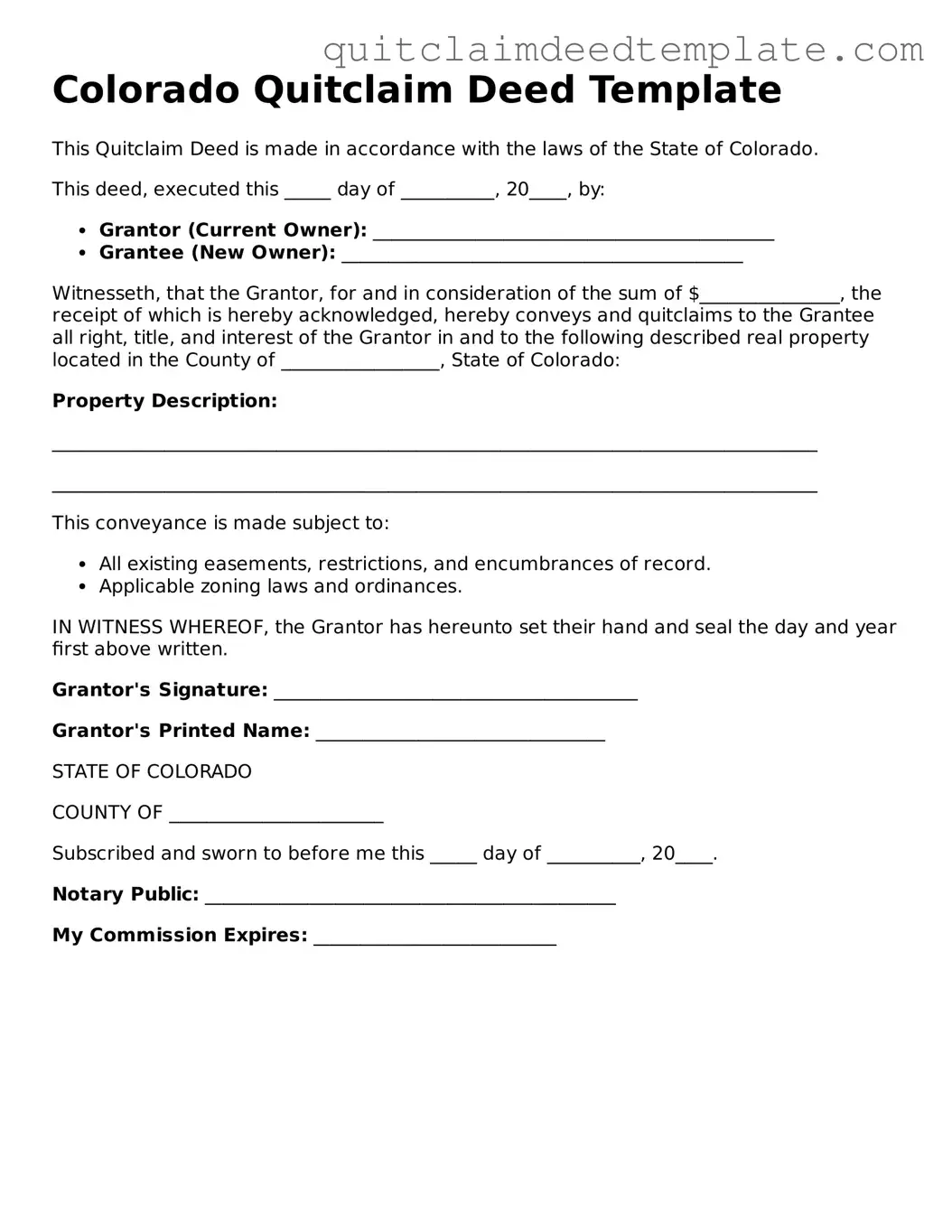Documents used along the form
When preparing a Quitclaim Deed in Colorado, several other forms and documents may also be necessary to ensure a smooth transfer of property ownership. Each of these documents serves a specific purpose and can help clarify the transaction. Below is a list of commonly used forms that complement the Quitclaim Deed.
- Warranty Deed: Unlike a Quitclaim Deed, a Warranty Deed provides a guarantee that the seller holds clear title to the property and has the right to transfer it. This document offers more protection to the buyer against future claims.
- Grant Deed: Similar to a Warranty Deed, a Grant Deed assures the buyer that the property has not been sold to anyone else and that there are no undisclosed encumbrances. It is often used in real estate transactions in Colorado.
- Title Insurance Policy: This document protects the buyer against any future claims or disputes regarding ownership of the property. It is typically purchased at the time of closing and can cover legal fees in case of a title dispute.
- Property Transfer Declaration: This form is required by the Colorado Department of Local Affairs. It provides information about the property transfer, including the sale price, and helps assess property taxes.
- Affidavit of Heirship: If the property is being transferred due to inheritance, this affidavit can be used to establish the heirs of the deceased owner. It helps clarify ownership and can be important for future transactions.
- Notice of Completion: In cases where improvements have been made to the property, this document notifies relevant parties of the completion of work. It can help protect the property owner from potential liens related to construction or renovation.
Using these forms in conjunction with the Quitclaim Deed can help facilitate a clearer and more secure transfer of property rights. It is always advisable to ensure that all necessary documents are prepared accurately to avoid complications in the future.
